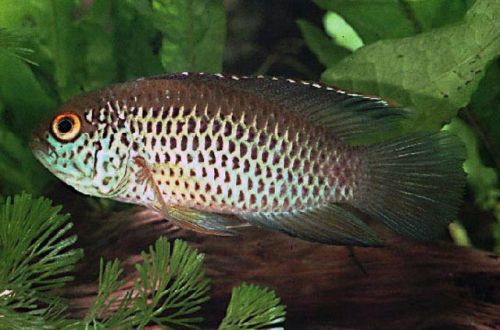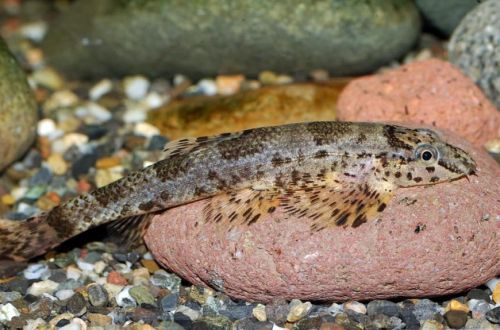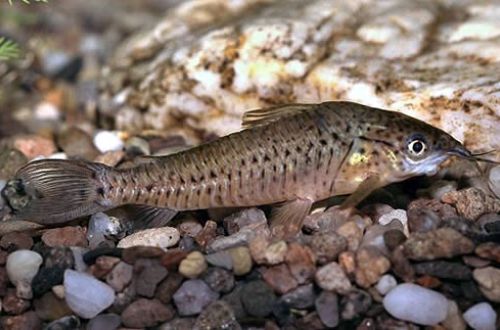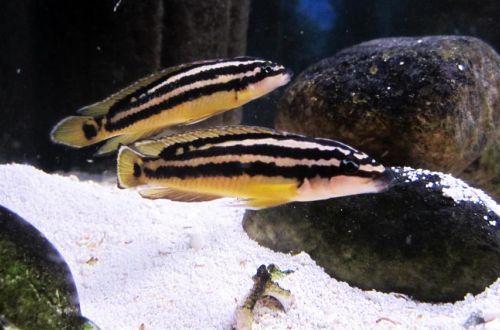
Yulidochromis installation
Julidochromis ornatus, scientific name Julidochromis ornatus, belongs to the Cichlidae family. Bright and lively fish. It has complex intraspecific relationships. It is easy to keep and breed, provided that suitable water conditions and diet are provided.

Contents
Habitat
Endemic to Lake Tanganyika in Africa, washing several states. The longest border runs through the territory of the Democratic Republic of the Congo and Tanzania. This species lives in the northern part of the lake among the rocky shoreline.
Brief information:
- The volume of the aquarium – from 70 liters.
- Temperature – 23-27°C
- Value pH — 7.5–9.0
- Water hardness – medium to high hardness (10-25 dGH)
- Substrate type – sandy
- Lighting – moderate
- Brackish water – no
- Water movement – weak, moderate
- The size of the fish is about 8 cm.
- Nutrition – meat feed with vegetable additives
- Temperament – conditionally peaceful in relation to other species
- Keeping in a male/female pair
Description
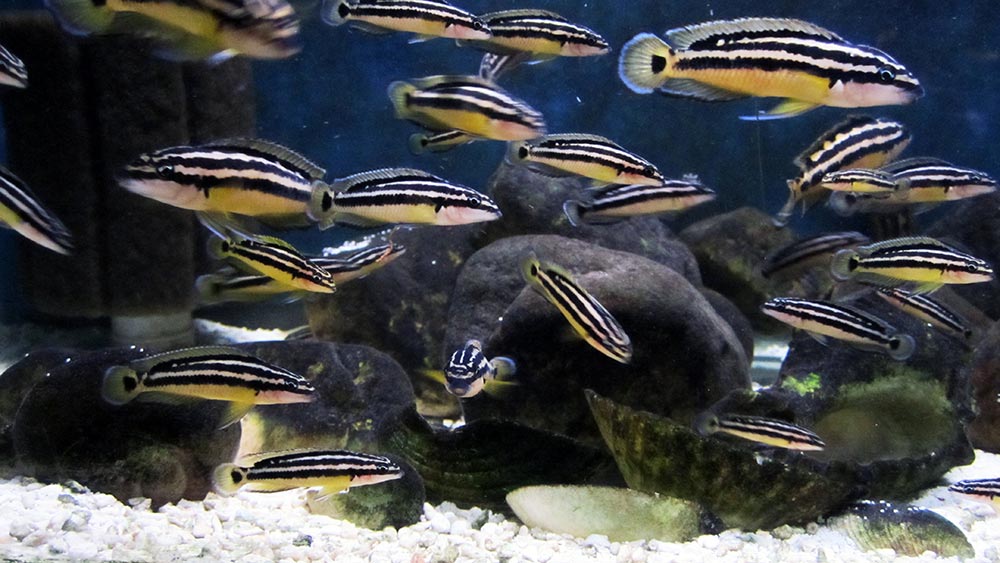
Adult individuals reach a length of about 8 cm. Sexual dimorphism is weakly expressed. Outwardly, it is problematic to distinguish a male from a female. The fish has an elongated body. The fins are elongated, the dorsal stretches from head to tail. The coloration is yellow with rows of horizontal dark stripes.
Food
The diet should consist of protein foods, for example, live or frozen bloodworms, brine shrimp. In addition to meat food, it is necessary to include herbal supplements in the form of spirulina flakes and nori pieces. Dry food is used to a limited extent and mainly to replenish the necessary trace elements and vitamins.
Maintenance and care, arrangement of the aquarium
The optimal size of the aquarium for one pair of fish starts from 70 liters. The design uses heaps of stones and a sandy substrate. These two decorative elements will fully reproduce the natural habitat of Julidochromis ornathus.
Successful management requires high water quality with suitable hydrochemical values. These goals are served by a high-performance filtration system, regular cleaning of the aquarium from organic waste (food residues, excrement), as well as weekly replacement of part of the water (15–20% of the volume) with fresh water.
Behavior and Compatibility
Julidochromis exhibit atypical behavior not characteristic of most fish. Namely, as they grow older, the male and female form a pair, which persists throughout their lives. The rest of the Kindred are seen as rivals and will be attacked. In a small aquarium, you can keep only one pair or settle several dozen fish, but in a large tank. In the latter case, aggression will be dispersed, and each pair will find a suitable area on the bottom for itself.
It is permissible to combine with representatives of other species of comparable size that live in the water column or near the surface.
Breeding / breeding
Breeding Julidochromis ornatus is quite simple and even beginner aquarists can do it. The only problem is finding a male/female pair. It is not enough to put fish of both sexes in an aquarium and wait for the fry to appear. There will be no results, in the worst case, a weaker individual may die. The pair should form naturally when the fish grow together from juvenile age.
For spawning, you will need a shelter in the form of a cave or grotto, where the female will lay her eggs. After fertilization, she remains next to the masonry. The male at this time takes a place near the entrance to the shelter for protection. The incubation period lasts about 2-3 days. Care for the offspring continues until the fry reach a length of up to 2 cm. From this moment, adult fish will be ready for the next spawning, and the fry should be moved to a separate aquarium.
Fish diseases
The main cause of most diseases of cichlids from Lake Tanganyika is unsuitable housing conditions and poor quality food, which often leads to such a disease as African bloat. If the first symptoms are detected, you should check the water parameters and the presence of high concentrations of hazardous substances (ammonia, nitrites, nitrates, etc.), if necessary, bring all indicators back to normal and only then proceed with treatment. Read more about symptoms and treatments in the Aquarium Fish Diseases section.



